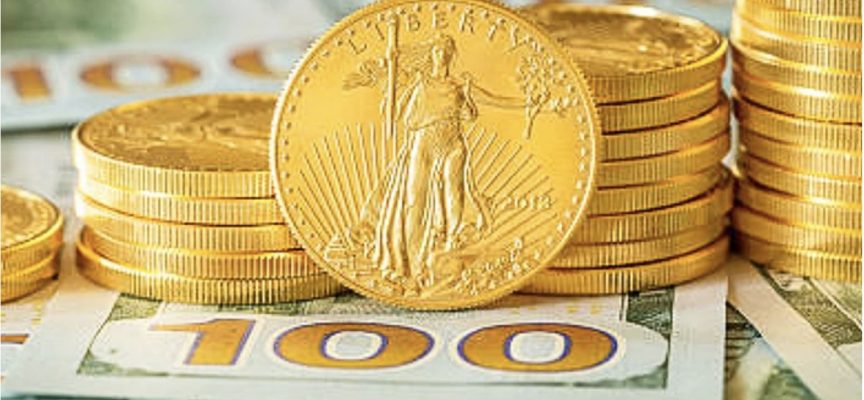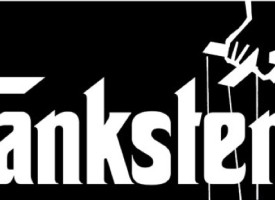On the heels of the recent volatility in the precious metals markets, it appears the gold correction is finally coming to an end.
Gold Correction Nearing Its End
December 6 (King World News) – Paul Wong, Market Strategist at Sprott Asset Management: Gold bullion lost some ground in November, closing the month at $1,775, off $8.86 from October’s finish of $1,784. Gold remains underwater at -6.52% YTD through November 30, 2021. By contrast, gold mining equities gained an iota of ground in November, up 0.79%, but are down 10.65% YTD as of November 30. Silver lost more ground than gold in November (-4.47%) and is down 13.51% YTD.
A Bumpy November: Taper, CPI, Accelerated Taper, Omicron and Goodbye Transitory
Spot gold bullion fell $8.86, or 0.50%, to close at $1,774.52 for November. Gold bullion pricing and positioning firmed after the September quarter-end cleansing only to retreat in the last week of November on fears of a possible accelerated Federal Reserve (“Fed”) taper timeline. Gold eased mildly into the November 2-3 Federal Open Market Committee (FOMC) meeting but began to rally immediately after the long-awaited taper announcement (buy on the news). Gold peaked at $1,867 after yet another very hot inflation print. For October, U.S. CPI (consumer price index) year-over-year was 6.2%, the biggest one-year jump in 30 years. After the monthly options expiry, gold retreated as flows backed away and the market began to price in the possibility of an “accelerated taper and tightening” announcement at the December 14-15 FOMC meeting.
The accelerated taper scenario was gaining momentum just as news of a possible new COVID variant (Omicron) broke during the U.S. Thanksgiving Holiday, sending markets into near panic. The half-day holiday liquidity highly exacerbated the price reaction. The risk that the Omicron variant poses is still unknown, and the range of possible outcomes remains wide at this writing. On the last day of the month, Fed Chairman Powell delivered a surprisingly hawkish Senate testimony. After months of repeated Fed messages of patience, Powell will likely remove the word “transitory” from describing inflation, acknowledging that the inflation risk is indeed persistently higher and broader…
ALERT:
Legendary investors are buying share of a company very few people know about. To find out which company CLICK HERE OR ON THE IMAGE BELOW.
 Sponsored
Sponsored
We believe the end of gold bullion’s consolidation is near (goodbye to Groundhog Day $1,800 at last?). Since gold’s August 2020 peak (see Figure 1), the metal has been consolidating the breakout from the multi-year base pattern highlighted with the dotted blue lines. Though the past year has seen many price swoons and exhausting trading, gold was never in danger, technically, of breaking its secular bullish pattern. As we wind down 2021, we see several elevated markers of macro risk that the market will not likely be able to ignore for much longer — risks that we believe to be in the regime-changing category.
Official Taper Announcement and a Hot CPI Print
The long-awaited Fed taper announcement finally arrived without much fanfare. Gold rallied before the formal announcement. During the November FOMC meeting, the Fed (regarding inflation) acknowledged that its tools could not ease supply constraints, but its policy would adapt appropriately, and it would not allow high inflation to become a permanent feature. Essentially, the Fed is promising to thread the needle on inflation. The Fed is attempting to correctly determine the right amount (and timing) of pre-emptive tightening to control inflation without impairing growth, despite admitting that interest rate hikes will have minimal effect on cost-push inflation.
Shortly after, the October CPI printed its highest number since 1990, a 6.2% year-over-year reading versus expectations of 5.9% (Figure 2). Rising food and energy prices have been a big driver of inflation over the past year. Rent inflation is also starting to appear in the data and will soon join food and energy as another inelastic inflation factor. With the Fed now admitting that the risk of persistently higher inflation has increased and is likely to be broader in scope, we wonder if the market will start to price the possible end of the “great moderation” of the past few decades? (The great moderation marks a period of growth with low inflation and low macro-level volatility, which has lasted since the end of the 1990 recession period.)
Questions about inflation expectations — an important psychological mechanism — are becoming paramount. But predicting whether inflation expectations become ingrained in consumers’ mindsets is difficult to forecast. If consumers start reacting as if inflation has become entrenched, it will be harder for the Fed to rein in expectations, especially on the wage front. The current degree of uncertainty and the surprisingly high levels of inflation are not helping. Figure 3 highlights how elevated these measures are and how they kept rising throughout this year despite the Fed and most economists stating since Q1 that inflation is “transitory.” The Fed call and consensus was that inflation would be transitory until mid-2022. This seems to have changed in Powell’s latest testimony before the Senate Banking Committee.
Real Interest Rates: That ’70s Show
Evidence has been building all year that inflation is not nearly as transitory as expected. Though the data is limited to only several months, the correlation of inflation to interest rates now appears broken compared to historical norms. U.S. 10-year Treasury yields, despite U.S. CPI at 6.2% and PCEPI (personal consumption expenditure price index) inflation at 4.1% (both well above the Fed’s 2% target), remain below 1.50%. Using any number of regression fit calculations, 10-year yields would be expected to be above 8% at current inflation levels. As the Fed maintains low nominal yields, despite the scorching inflation numbers, real yields as measured by the U.S. 10-year Treasury yield minus CPI have reached the nadir of the 1970s (see Figure 4). If the goal of the Fed is to deflate away the debt via inflation, it is doing a remarkable job. Real wealth, however, is also being eroded in the collateral damage — financial repression at work.
Inflation Meets the Zero Bound
Since about 2001, there has been a pronounced negative correlation between bonds and equities. The Fed policy of targeting 2% provided an inflation anchor, and the emergence of China as a major economy kept prices in check as offshoring (globalization) lowered costs. Throughout this period, deflationary growth shocks were the primary risk tail for both bonds and equities. The Fed’s standard policy response was to cut interest rates and pump liquidity into the financial system via debt expansion at every significant risk event. But even into a recovery, interest rates were never allowed to retrace entirely due to the higher debt load. After multiple risk events, we have seemingly come to the inevitable conclusion of inflation meeting the zero bound.
In prior decades, bond volatility eventually became a “good form” of bond volatility through lower interest rates. Ever lower rates, driven by the Fed, have propelled bond markets higher and raised equity valuations. However, at the zero bound, the scope for good bond volatility is minimal (very little room is left for rates to decline). An unexpected surge in cost-push inflation, where central bankers have limited influence, is the “bad kind of bond volatility.” More so when it occurs at the zero bound as there is only one way to go — up. When the risk-free asset becomes a source of risk and volatility, we highly question the continuation of the negative correlation between bonds and equities. As a safe haven asset and diversifier in a multi-asset portfolio, we believe gold will become more critical and relevant in short order.
When All Asset Class Volatility Rises
As measured by the MOVE Index, bond volatility has been rising throughout 2021, outpacing equity and currency volatility measures. Lately, all three volatility indices have been rising. The top panel in Figure 5 is a weighted combined average of equity, bond and currency volatility indices. The bottom panel is the price of gold bullion. The pattern is clear: we believe gold becomes highly attractive as a hedge when volatility rises simultaneously in all asset classes. Figure 5 shows that gold becomes more attractive when the most common and used hedge (the bond/equity hedge) is no longer effective. As pointed out in prior commentaries, gold positioning is near multi-year lows.
What if Omicron Hits Economic Growth Hard?
At this time, we have limited information on the omicron variant, so the range of possible outcomes is wide. If the new variant damages the growth outlook, we expect it to accelerate the existing downside forces. In our September commentary, Doug Groh highlighted the peak in the global credit impulse. Global credit impulse measures the change in new credit as a % of GDP (gross domestic product; fiscal impulse). Global credit impulse is an excellent lead indicator for GDP growth and tends to lead by 1.5 years. The global M2 money supply (monetary impulse) is also a great lead indicator and tends to lead by a year.
When these two indicators are time aligned (see Figure 6), they provide strong evidence of when growth will crest or bottom, especially if synchronicity occurs. Currently, Q1 2022 appears to be when marked growth pressures should start in earnest. Before that happens, there should be signs of a slowdown and divergences, which is happening (i.e., yield curve flattening). By the second half of 2022, these two indicators should show a more pronounced weakness. By this timeframe, the market is pricing the completion of taper and the beginning of rate hikes. By Q1 2022, we doubt the taper process will go smoothly (Omicron variant or not). There is a probability that Fed rate hike expectations by July 2022 will give way to talk of stimulus by the end of 2022. Note the green arrow in Figure 6 during early 2019. By early Q1 2019, we went from the Fed trying to normalize its balance sheet to the Powell Pivot. That data was already generated in 2017/18. Sometime in 2022, be on the lookout for some variation of Powell Pivot 2.0.
Macro Risk index Already at the Upper End
Months before the news of the Omicron variant and before the 6.2% October CPI figure, macro risk as measured by the Citi Macro Risk Index had registered a low (Figure 7). By November month-end, it had entered the high-risk zone. We will likely see a very elevated macro risk coincide with Fed tapering, along with global credit impulse and global M2 rollover effects in place. Asset prices, however, have held up remarkably well, mainly due to the highly accommodative financial conditions put in place by the Fed. Essentially, massive monthly asset purchases devoid of price valuation considerations have created and supported overvalued assets — for example, equities trading near dot.com valuations and bond prices detached from inflation. If the financial conditions index deteriorates, perhaps in part due to accelerated tapering, the “mark-to-market gap” relative to macro risk would be significant.
Not surprisingly, when macro risk rises, gold (as a safe haven) relative to equities outperform, as illustrated in Figure 8. The bottom panel is the gold bullion to S&P 500 ratio on a year-over-year change basis. The dashed arrows help highlight the relationship. The gold to S&P 500 ratio will likely rise if any combination of inflation pressures, Omicron risk, tapering or the slowdown worsens the macro risk picture.
Nearing the End of the Gold Correction
By most measures that we consider significant to gold pricing dynamics (our list is long and varied), we believe we are near the end of gold’s price correction. Monetary and fiscal impulses are rolling over. Macro risk conditions appear to already be at the red line. Inflation risk continues to build and broaden out. Another possible problematic COVID variant has arrived. Earnings momentum is now rolling over, and margin pressures are mounting. Yields are rising, with most asset classes carrying large amounts of embedded duration. We believe the two-decades-long negative bond equity correlation is at an uncomfortable degree of ending. All asset class volatility is rising, but this time bond volatility is leading (the risk-free asset). Fed accommodation will be unwinding soon, and while the overall economy may be relatively immune, richly priced assets may not.
Yet gold bullion continues to trade almost exclusively to the outlook for taper due to the current short-term dominance of the quantitative-type funds (i.e., CTAs, systematics, quants, algorithmic, etc.). The degree to which macro risks and headwinds are piling up is considerable. When juxtaposed against a near positioning wipeout for gold bullion, we are confident the plus year-long correction in gold is near its end.
***ALSO JUST RELEASED: Money Destruction, QE Taper And What To Expect Next CLICK HERE.
***ALSO JUST RELEASED: EXCLUSIVE: Celente – These Top 2022 Trends Are Going To Be Redirecting Society & The World For Many Years To Come CLICK HERE.
***ALSO JUST RELEASED: MAJOR ALERT: We Are Going To Be Redirecting Society & The World For Many Years To Come CLICK HERE.
TOP TRENDS FOR 2022!
***To hear one of Gerald Celente’s greatest interviews ever where he discusses the all-important top trends for 2022 CLICK HERE OR ON THE IMAGE BELOW.
Gold Shortage & Unprecedented Delivery Delays
***To listen to Alasdair Macleod discuss the shortage of available physical gold and unprecedented delivery delays CLICK HERE OR ON THE IMAGE BELOW.
© 2021 by King World News®. All Rights Reserved. This material may not be published, broadcast, rewritten, or redistributed. However, linking directly to the articles is permitted and encouraged.


















